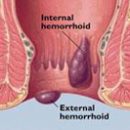How is chronic pain treatment? What medicines are used in treatment? Answers to these questions you will find in the article.
Content
What is treated
Most likely, the first for the treatment of chronic pain will be prescribed drugs that give fewer side effects (such as acetaminophen). If necessary, you will prescribe a large dose or replace the drug. Older people more often experience side effects of drugs, so treatment should begin with very small doses that should increase slowly.
Drugs used for the treatment of chronic pain include the following:
Painty (Analgesics), such as acetaminophen or non-steroidal anti-inflammatory drugs, such as aspirin or ibuprofen (for example, advil), which can be prescribed for pain from weak to moderate and to reduce inflammation. Always take these drugs in accurately according to the appointment of a doctor or dosage indicated on the package. Do not take a non-steroidal anti-inflammatory drug released during more than 10 days if you have not previously agreed with your doctor.
 Antidepressants, such as tricyclic antidepressants (for example, amitriptyline) that can be used to treat chronic pain, despite the fact that not all antidepressants are effective to facilitate pain. DULOXETINE (CYMBALTA) is an antidepressant of another type, which is approved by the Office for Control of Products and Medications of the United States for the treatment of pain during peripheral neuropathy.
Antidepressants, such as tricyclic antidepressants (for example, amitriptyline) that can be used to treat chronic pain, despite the fact that not all antidepressants are effective to facilitate pain. DULOXETINE (CYMBALTA) is an antidepressant of another type, which is approved by the Office for Control of Products and Medications of the United States for the treatment of pain during peripheral neuropathy.
Corticosteroids, Such as prednisone, which are used to reduce inflammation and pain.
Oral drugs, such as Mexitil, which act as local anesthetics in order to muffle pain.
Anticonvulsant drugs, which can relieve pain that has its origin in nerves (neuropathic pain). Examples are:
GabaPentin (Neurontin) for postgerpetic neuralgia (nervous pain from linguing).
Pregabalin (Lyrica) for postherpetic neuralgia and diabetic neuropathy (nervous pain from diabetes).
Carbamazepine (Tegretol) for help in the control of episodes of facial pain in the neuralgia of a trigeminal nerve. If you take carbamazepine daily, you must periodically go to the doctor checking in order to eliminate the development of serious side effects (such as an allergic reaction or liver problems).
Paintaling, which are applied directly to the skin (local analgesics), such as Emla cream or lidocaine plaster (Lidoderm), and which lead to numbness of the skin and reduce pain.
Capsaicin - The natural substance that is in the pepper chili, and is used to produce certain creams of local pain actions.
Capsaicin changes the skin pain signals, block pain without blocking other sensations. Capsaicin when first use can cause a feeling of burning. Before applying capsaicin, always put on gloves and do not touch the eye, and do not try them before you carefully do not wash your hands with soap.
Synthetic narcotic analgesics that can weaken from moderate to severe pain. Examples of synthetic narcotic analgesics include morphine, oxycodone (such as OxyContin), hydrocodone with acetaminophen (such as Vicodin, Lortab or Norco), or codene acetaminophen (such as Codeine Tylenol). For the treatment of nervous pain, synthetic narcotic analgesics are sometimes combined with other drugs, such as GabaPentin.
Other treatments that can be used in the treatment of chronic pain are:
Injections for nerves blockade. To relieve pain in the damaged nerve is introduced anesthetic. Anesthetic can weaken the pain for several days, but the pain is usually returning. Despite the fact that the blockade of nerves usually do not treat chronic pain, they can allow you to start physiotherapy and expand the range of movements that you can perform.
Epidural injections steroids (steroid injections around the spine). Despite the fact that these injections are applied for many years and can bring relief in reel in the lower back or pain in the neck, the cause of which is the disk disease or squeezing of the nerve, this therapy does not help everyone.
Injection in curricular points. They can relieve pain by injection anesthetic in curricular dots (or specific painful zones) associated with chronic face pain or fibromyalgia. Blockads of nerves or other injections help relieve pain many people. However, it is not clear how this type of treatment works. These injections do not facilitate chronic pain in each case.
What is worth knowing about
Drugs can work well if combined with other treatments, such as physiotherapy and counseling in order to influence various causes of chronic pain. Each person transfers differently and reacts to chronic pain.
Medications can reduce or temporarily alleviate chronic pain. Initially, you most likely prescribe medicines that have fewer side effects. Then, if it is necessary, you will gradually increase the dose or appoint another drug.
In general, we recommend that you avoid drinking alcohol during the reception of painful medicines, and prevent doses of doses exceeding the dose appointed by your doctor.
Drugs taken daily can be an effective part of the long-term treatment of chronic pain. However, sometimes the medicine is partially or completely loses its effectiveness if it is used for a long time, since your body produces resistance to it.









